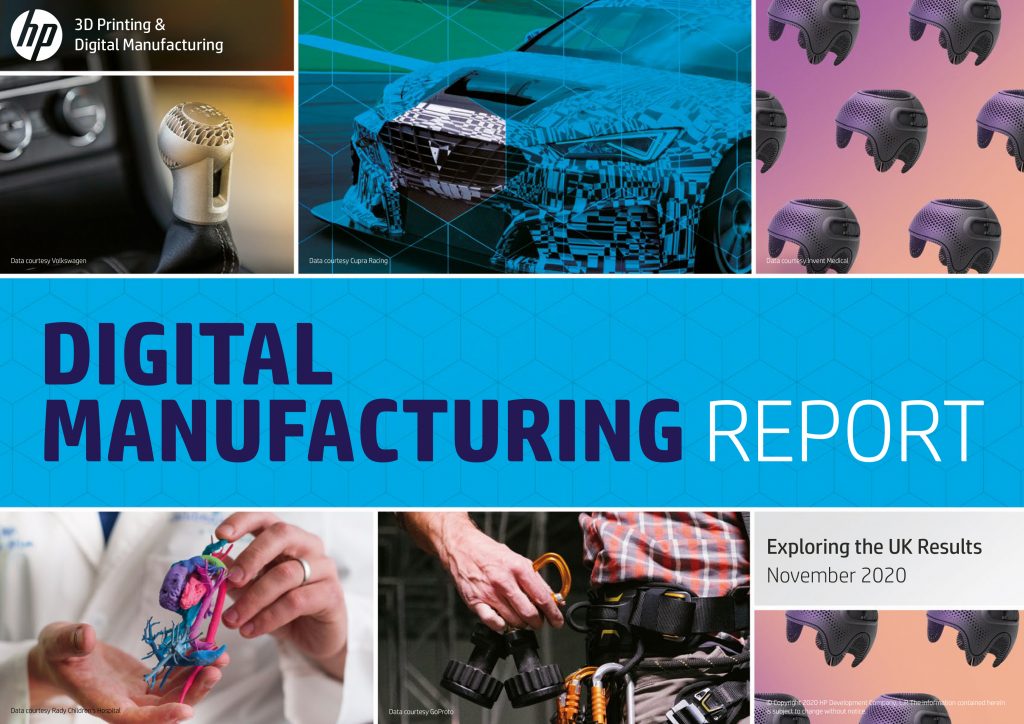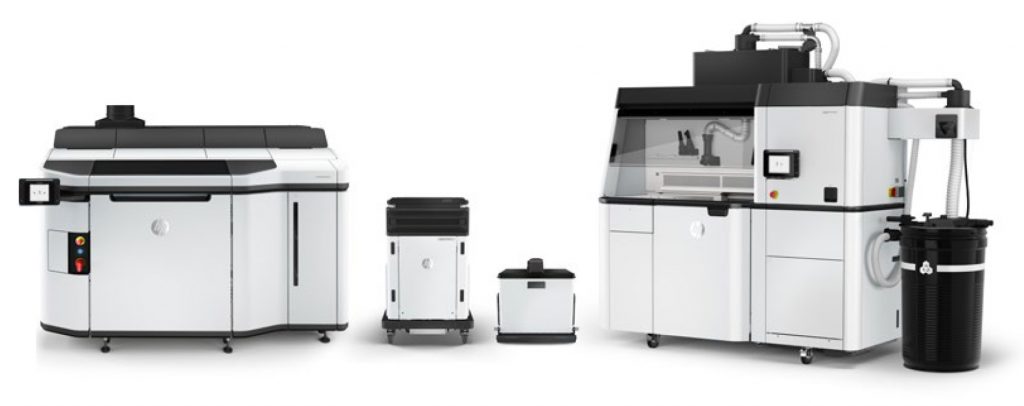
As many of you will already know, in 2020 we have been building the business through a series of internal investments totalling £1 million to support our clients with a broader range of 3D printing services. One of the key investments was in the most advanced Multi Jet Fusion (MJF) 3D printing system available on the market from HP – the MJF 5210. Our machine has been running virtually non-stop since installation and this month we were very interested to see that HP has published its latest “Digital Manufacturing Trends Report 2020.” This has enabled us to reflect on the report’s findings for the 3D printing market and how they align with our own thinking as a leading UK 3D printing service provider.

The report emphasises the importance of digital manufacturing technologies — specifically the central role of 3D printing / additive manufacturing — for driving innovation for current and future product development. It further highlights the potent capabilities of industrial 3D printing technologies to drive economic growth (important considering the effects on the economy of the pandemic), while enabling faster innovation and more sustainable production.
The findings of the report, according to HP, are based on a survey of 2,175 3D printing and digital manufacturing decision makers, conducted during the summer of 2020. Respondents were located across three continents and nine geographic areas including Canada, China, France, Germany, Japan, Mexico, Singapore, the UK, and the U.S.
So saying, 90% of the respondents indicated that they are ‘looking to evolve their business models because of the current world business environment’ in terms of digital technologies and innovation.
A very convincing 99% of all respondents to the HP survey believe that digital manufacturing technologies can lead to economic growth. Moreover, 86% of respondents indicated “an expected investment increase in additive manufacturing.” The report directly links the ability of 3D printing to dramatically shorten lead times to economic growth, stating: “One metric and driver of economic growth for manufacturers is time to market; a product isn’t of value to anyone if it’s sat in a factory.” This is a no-brainer for any company that is part of a manufacturing supply chain. However, the HP report goes on to provide important context, specifically how important it is that manufacturers are able to “strike the balance between getting goods to market more quickly, without over-investing in new technology that won’t pay for itself quickly enough.”
We couldn’t agree more, and this is why we do what we do here at 3DPUK. With years of capability and experience under our belts with the industrial polymer powder bed fusion process, we can minimize the risk for our clients by providing guaranteed quality parts (for functional prototypes AND batch production applications) alongside express delivery to meet even the most stringent of lead times — without necessitating capital investment, at least until the manufacturing process chain has been established and proven. Full disclosure, here, though, in that as the system manufacturer, HP is looking to drive sales. We support that but we will always be a reliable conduit — a safe pair of hands — for companies considering AM as a permanent solution for their manufacturing requirements during the transition.
Of particular note, we were very interested in a key statistic of the report that specified that 79% of respondents said that they viewed industrial 3D printing as a viable alternative to traditional manufacturing technologies. In our experience this is always application dependent — not all manufacturing applications fit the bill. It is also dependent on the volumes of parts to be produced. Today there is a broad spectrum of applications that do fit comfortably with 3D printing. Moreover, we concur with 75% of the HP respondents that 3D printing can provide a reliable backup for a breakdown in traditional manufacturing supply chains. If nothing else, the pandemic has taught us that.
In another area of the report, respondents were very positive about the opportunities that 3D printing affords for accelerated innovation and fuelling new areas of innovation under investigation by UK companies. In particular, the report cites that 91% of respondents are exploring — or looking to explore — how mass customization can be utilized within their businesses through customized products enabled by additive manufacturing. Specific focus here was placed on developments in the medical, industrial and automotive industries taking place over the next 5 years.
The full HP Digital Manufacturing Trends Report 2020can be downloaded from the link.
